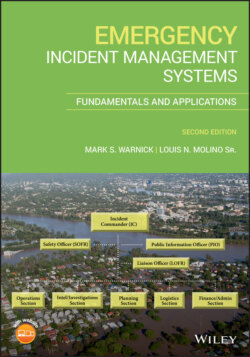Читать книгу Emergency Incident Management Systems - Mark Warnick S., Louis N. Molino Sr - Страница 56
2.5.1 Command
ОглавлениеThe act of commanding an incident means that an individual or a group of individuals working together have the authority to direct operations, and they do so. In the Tokyo attack, there was not anyone commanding the incident. Each agency was working independently of other responding agencies. Due to the lack of command, the incident had no specified direction, security was lax or almost nonexistent, and each agency operated under their own authority. This equated to each agency making decisions and addressing issues as they saw fit, based on their view of the incident. Even after the realization that the Tokyo incident was a terrorist attack, there was no overall command presence to guide and direct these response and recovery efforts.
An overarching presence that provided direction for all personnel was not present during the Tokyo response. The lack of organization for the resources that responded to this attack caused each to work independently of other organization. Each entity managed the incident based on what their individual agencies priorities were, and there was little to no regard for what other entities were doing, or how they could approach the response and recovery in a unified effort.
In Oklahoma City, there was a command presence, and command direction from the onset. When Oklahoma City Fire Department arrived at the Murrah Building, a senior officer in the fire department immediately established command. While the command of the incident was initially chaotic, this was primarily because good Samaritans were interjecting themselves into the incident. In most major incidents, the general public does not realize that their efforts can cause issues with commanding an incident.
The Oklahoma City Fire Department commanded the incident until it was no longer safe to search for bodies. For a little more than a month, the fire department commanded the incident. This is not to say that the fire department did all of the work because they did not. The fire department organized and planned every detail, usually in cooperation with other agencies. Everything that was accomplished during this response was done so with the overarching goal of recovering all of the victims to be accomplished. In fact, each agency had specific tasks, but those tasks were either directed by, or requested and approved by, Incident Command (IC). In most instances, these goals were specific in nature, and each goal had a way of measuring success, they were attainable with the resources on scene, they were relevant to the overall mission, and except for the investigation, timelines were set to ensure ongoing progress. Even the FBI response was to a certain extent commanded by the fire department. While the FBI did the investigation on their own terms, they also coordinated and sought approval from the fire department to ensure that the FBI was not in the way of rescue and recovery operations.
